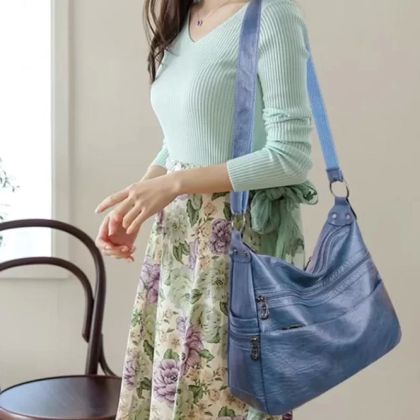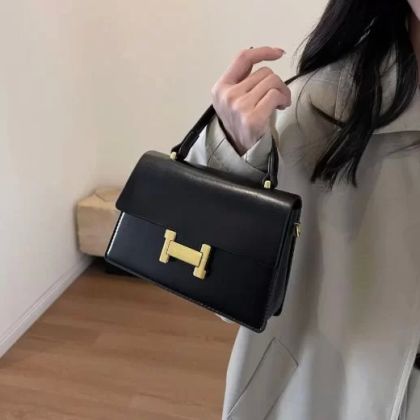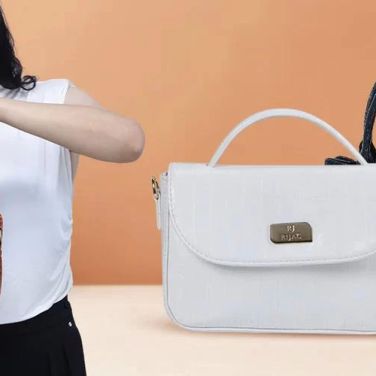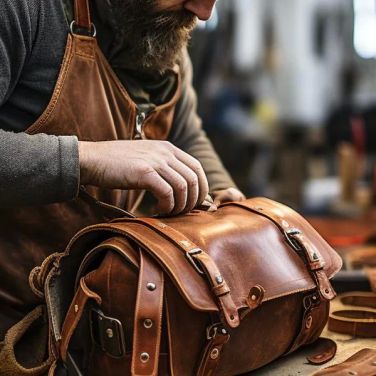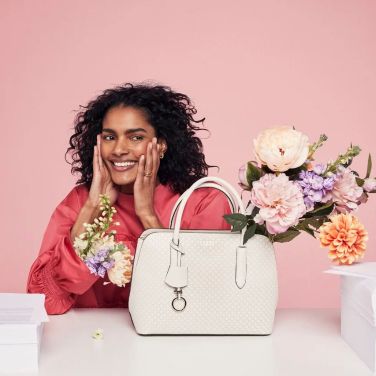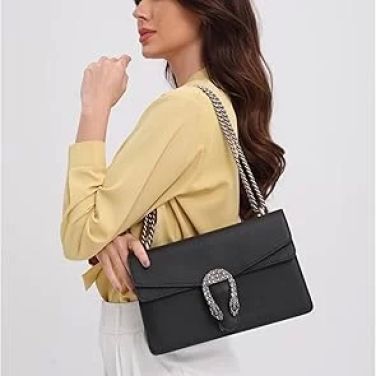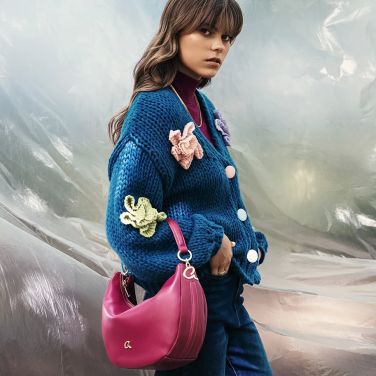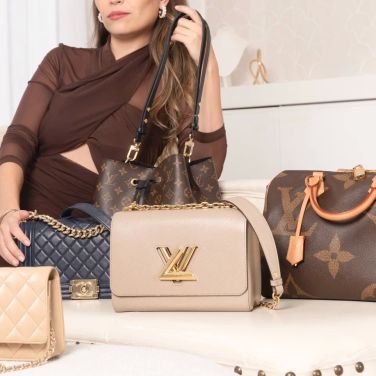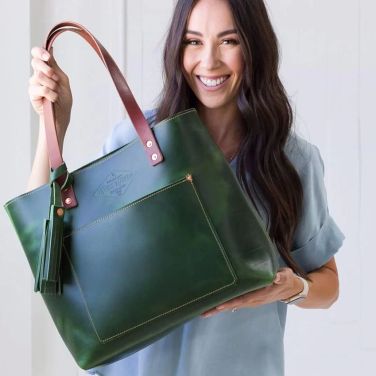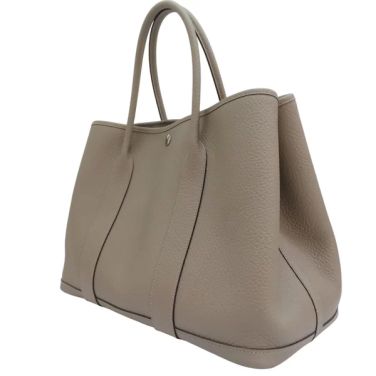Handbag Buying Guide: Essential Tips for Choosing the Perfect Bag
- Why Choosing the Right Handbag Matters
- Understanding Different Types of Handbags
- Materials to Consider When Buying a Handbag
- Size and Functionality: How to Pick the Right Fit
- Matching Your Handbag Style to the Occasion
- Real-Life Handbag Purchases: My Experience and Recommendations
1. Why Choosing the Right Handbag Matters
When it comes to fashion, handbags are often one of the most overlooked accessories. However, choosing the right handbag is essential, not just for complementing your outfit, but also for practicality and functionality. A handbag is more than just a bag to carry your essentials; it’s an expression of your style, personality, and even your lifestyle.
In my own experience, I’ve realized that a good handbag doesn’t just enhance your look but also makes a huge difference in how organized and prepared you feel throughout the day. Whether you're heading to work, running errands, or going out with friends, the right handbag can elevate your outfit and provide easy access to everything you need. Plus, it’s important to choose a bag that suits both your needs and the activities you’ll be doing.
In this handbag buying guide, I’ll share valuable tips and insights to help you choose the best handbag for your unique needs. By the end of this article, you'll have a better understanding of what to look for when shopping for a handbag, ensuring that you make a choice that will serve you well for years to come.
2. Understanding Different Types of Handbags
The world of handbags is vast, with countless styles to choose from. Understanding the different types of handbags available can help you make an informed decision when buying one. Each style serves a different purpose and complements various occasions and outfits. Here are a few common types of handbags you’ll likely encounter:
- Tote Bags: Tote bags are large, versatile bags that are perfect for everyday use. They offer plenty of space for carrying groceries, work essentials, or travel items. Their practical design makes them ideal for busy individuals who need ample storage space without compromising on style.
- Crossbody Bags: Crossbody bags are worn across the body, making them hands-free and highly convenient. They’re perfect for people on the go who want to carry just the essentials without being weighed down by a bulky bag.
- Clutches: A clutch is a small, handheld bag that’s often used for evening events or formal occasions. While not practical for everyday use, clutches are great for special outings when you don’t need to carry much.
- Satchels: A satchel is a structured bag with a top handle, offering both style and functionality. It's a versatile option that works well for both work and casual outings, providing ample space while maintaining a polished appearance.
- Backpacks: Backpacks are increasingly popular as stylish yet practical handbags. They’re particularly useful for commuters and students who need to carry larger items without sacrificing comfort.
By understanding these different handbag types, you can more easily identify which style best suits your needs. Keep in mind that each type of bag offers distinct advantages, and the best one for you will depend on your lifestyle, the occasion, and personal preferences.
3. Materials to Consider When Buying a Handbag
When it comes to buying a handbag, the material plays a critical role in determining the bag’s durability, appearance, and functionality. The choice of material will not only impact the bag’s look but also affect how long it will last and how easy it is to maintain. Below are some of the most common materials used in handbag construction, along with their pros and cons:
- Leather: Leather handbags are timeless, durable, and offer a luxurious look. They are resistant to wear and tear, making them an excellent long-term investment. Leather bags do require regular care and maintenance to prevent damage and keep them looking their best.
- Canvas: Canvas handbags are lightweight, affordable, and often come in vibrant designs. They are perfect for casual outings but may not be as durable as leather. Canvas bags are easy to clean, making them ideal for everyday use.
- Synthetic Materials: Synthetic bags, such as those made from nylon or polyester, are often more affordable than leather and can come in a variety of styles. While they can be durable and easy to clean, they may not have the same luxurious feel or long-lasting quality as leather bags.
- Suede: Suede bags have a soft, velvety texture that adds a touch of elegance. However, suede is more susceptible to staining and damage from water, so it requires special care to maintain its appearance.
When choosing the right material for your handbag, consider factors like how often you'll use it, how easy it is to clean, and how much care you’re willing to invest in maintaining it. For example, if you're looking for a bag that can withstand everyday use, leather or synthetic materials might be a better choice. If you want a bag for casual outings, a canvas bag could be perfect.
4. Size and Functionality: How to Pick the Right Fit
Size is another important consideration when buying a handbag. You want a bag that fits your daily needs without feeling too bulky or too small. Consider the types of items you typically carry, such as your phone, wallet, makeup, or laptop, and ensure that the bag you choose has enough space for these essentials without being oversized.
In addition to size, functionality should also be a priority. Think about the type of closure (e.g., zipper, magnetic clasp) and whether it offers easy access to your belongings. Adjustable straps, compartments, and extra pockets can also add to the functionality of your bag. I personally prefer handbags with multiple compartments, as they allow me to stay organized and easily access what I need on the go.
Remember, the best handbag for you will be one that fits your personal style, meets your functional needs, and suits your lifestyle. Whether you're traveling, commuting, or just running errands, a well-chosen handbag will make a big difference in your daily routine.
5. Matching Your Handbag Style to the Occasion
Your handbag choice should reflect the occasion and your personal style. A bag that works for one event might not be appropriate for another. For example, a sleek leather clutch is perfect for an evening gala, while a roomy canvas tote is ideal for a day at the beach. When selecting a handbag, always consider the occasion and the outfit you plan to wear with it.
If you’re unsure, neutral-colored bags like black, beige, or navy can easily complement most outfits and occasions. However, if you want to make a statement, consider bold colors or unique designs to show off your personal flair. I’ve found that having a few versatile bags for different occasions helps me stay prepared for whatever the day holds.
6. Real-Life Handbag Purchases: My Experience and Recommendations
Throughout my years of handbag shopping, I’ve learned a few things about what makes a good purchase. One of my top picks was a high-quality leather tote I bought last year. Not only did it fit all my daily essentials comfortably, but its classic design meant I could carry it to both work and casual outings. It has held up beautifully, and the leather only gets better with age, making it a solid investment.
Another great purchase was a compact crossbody bag I bought for travel. It was small enough to keep things simple but spacious enough to hold everything I needed for a day of sightseeing. The hands-free design made it ideal for walking around, and the adjustable strap allowed me to customize the fit.
When making a handbag purchase, I recommend considering not just the look and price but also the practicality and durability of the bag. If you're looking for a handbag that’s versatile, stylish, and built to last, check out the collection at Feima Bags, where you’ll find high-quality bags suited for any occasion.

